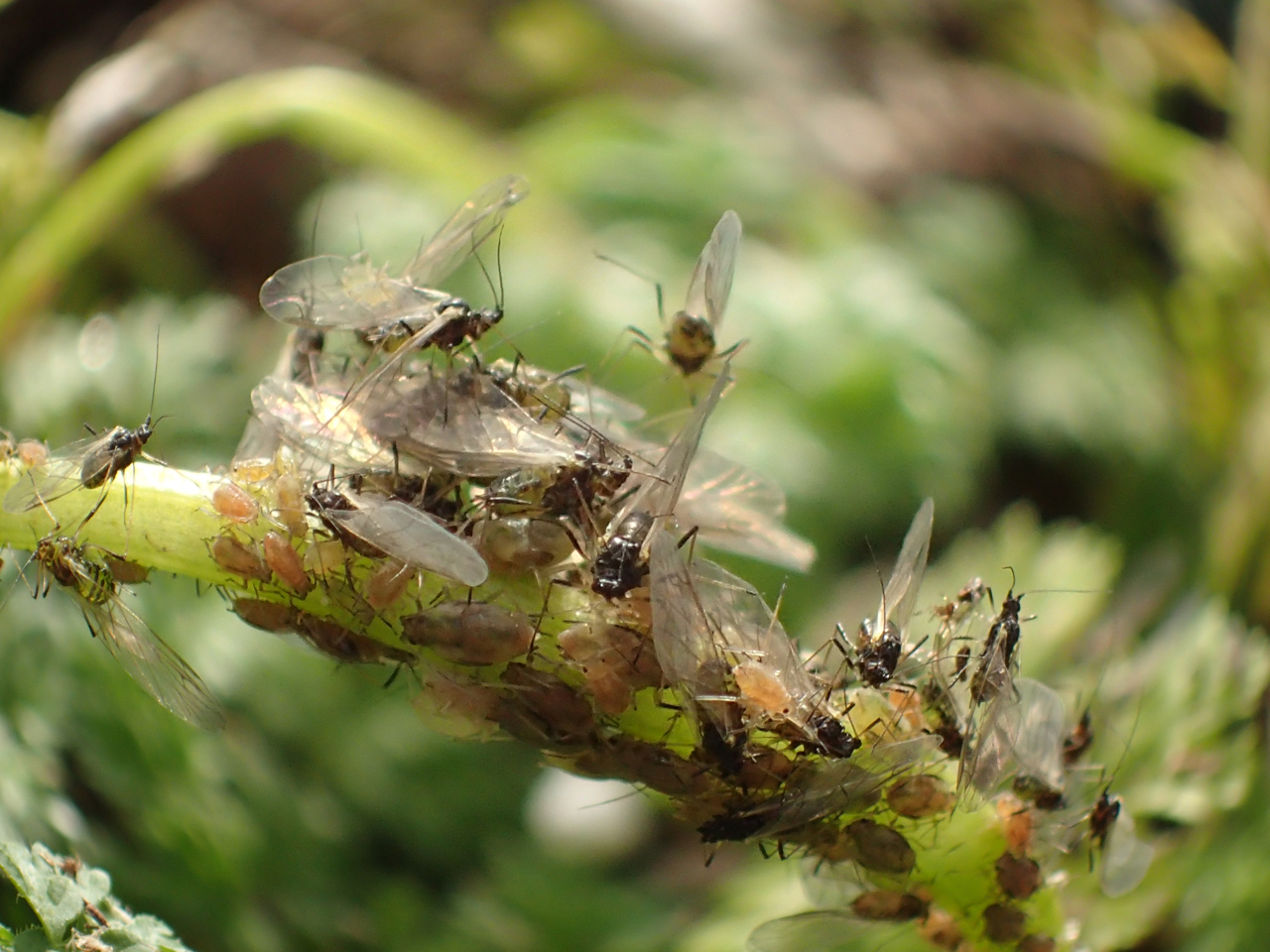Exercise Restraint When Feeding and Watering
Bundi also says, “I think the biggest problem with indoor plants is overfeeding and overwatering them.”
She says they don’t need feeding if they are not actively growing. In the middle of winter, when light levels are low, refrain from feeding. Then, when the days lengthen in spring, resume with a water soluble fertilizer.
“Water them when they are dry, but don’t let them sit in water,” Marcia says.
If they’re given too much water, she says the roots become water-logged, oftentimes rotting and ultimately killing the plant. The easiest way to prevent this is a little benign neglect, as she jokingly calls it. Instead of having them on a specific schedule, stick a finger in the soil to see if the plant actually needs water.
Know the Common Indoor Plant Pests
In dealing with common indoor pests first determine if there is a problem. It’s often easy to spot pests on your indoor plants since they are in front of you on a daily basis. It’s glaringly obvious when their leaves are brown or pocked, or when you see bugs flying around. While a couple of insects isn’t a cause for alarm, you’ll want to stay vigilant. It doesn’t take much of an infestation to be a problem in the confines of a home.
Fungus Gnats – Another Reason to Not Overwater
“Fungus gnats look like flies. They have spidery legs and clear wings,” says Marcia. They also have long antennae, which distinguishes them from flies or mosquitoes, and are rather delicate looking. They’re not strong fliers, so are more often seen flying close to the plants or scrambling over the top of the soil or on the foliage.
“Fungus gnats feed on algae that grows in the soil. The larvae eat the roots of the plants,” says Marcia. The adults aren’t a big issue as their life span is only 3 days, nor do they feed on the plants.

Fungus Gnats – photo by Amy Grisak
The best way to prevent a fungus gnat infestation is to not overwater. If the soil is not perpetually damp, algae is less likely to grow, and it won’t encourage these pesky guests.
Fungus gnats typically aren’t a huge problem, and the larvae only harm the plant if they occur in large enough numbers. However. if an infestation is significant, there are potential treatments. Yellow sticky traps placed on skewers and stuck into the soil around the plant will capture many of them. The natural bacteria, Bt (Bacillus thuringiensis) ,is also effective, although it should be applied according to the label directions for the best results.




